Related Research Articles
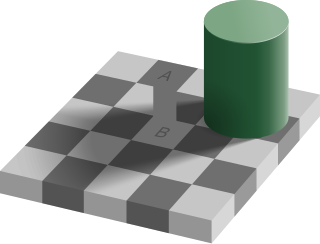
The philosophy of perception is concerned with the nature of perceptual experience and the status of perceptual data, in particular how they relate to beliefs about, or knowledge of, the world. Any explicit account of perception requires a commitment to one of a variety of ontological or metaphysical views. Philosophers distinguish internalist accounts, which assume that perceptions of objects, and knowledge or beliefs about them, are aspects of an individual's mind, and externalist accounts, which state that they constitute real aspects of the world external to the individual. The position of naïve realism—the 'everyday' impression of physical objects constituting what is perceived—is to some extent contradicted by the occurrence of perceptual illusions and hallucinations and the relativity of perceptual experience as well as certain insights in science. Realist conceptions include phenomenalism and direct and indirect realism. Anti-realist conceptions include idealism and skepticism. Recent philosophical work have expanded on the philosophical features of perception by going beyond the single paradigm of vision.
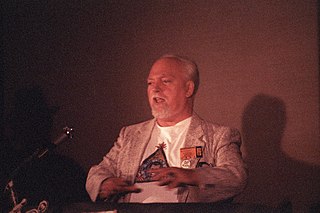
Robert Anton Wilson was an American author, futurist, psychologist, and self-described agnostic mystic. Recognized within Discordianism as an Episkopos, pope and saint, Wilson helped publicize Discordianism through his writings and interviews. In 1999 he described his work as an "attempt to break down conditioned associations, to look at the world in a new way, with many models recognized as models or maps, and no one model elevated to the truth". Wilson's goal was "to try to get people into a state of generalized agnosticism, not agnosticism about God alone but agnosticism about everything."

Thomas Reid was a religiously trained Scottish philosopher best known for his philosophical method, his theory of perception, and its wide implications on epistemology, and as the developer and defender of an agent-causal theory of free will. He also focused extensively on ethics, theory of action, language and philosophy of mind.

Timothy Francis Leary was an American psychologist and author known for his strong advocacy of psychedelic drugs. Evaluations of Leary are polarized, ranging from bold oracle to publicity hound. According to poet Allen Ginsberg, he was "a hero of American consciousness", and writer Tom Robbins called him a "brave neuronaut". During the 1960s and 1970s, Leary was arrested 36 times. President Richard Nixon described him as "the most dangerous man in America".
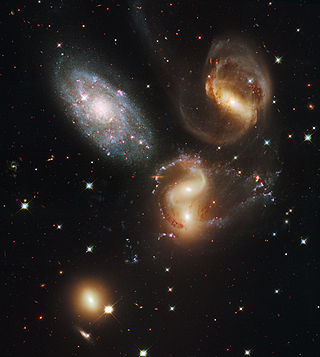
Reality is the sum or aggregate of all that is real or existent within the universe, as opposed to that which is only imaginary, nonexistent or nonactual. The term is also used to refer to the ontological status of things, indicating their existence. In physical terms, reality is the totality of a system, known and unknown.
Consensus reality refers to the generally agreed-upon version of reality within a community or society, shaped by shared experiences and understandings. This understanding arises from the inherent differences in individual perspectives or subjectivities relating to knowledge or ontology, leading to uncertainties about what is real. While various viewpoints exist, people strive to establish a consensus, serving as a pragmatic guide for social norms. The term carries both positive and negative connotations, as it is viewed critically by anti-realist theorists but recognized for its practical benefits in fostering shared beliefs. Consensus reality differs from consensual reality, with the former representing mutual agreement about what is true. Artists and thinkers have challenged consensus reality, aiming to disrupt established norms and question the authenticity of the world's reality.
Solipsism is the philosophical idea that only one's mind is sure to exist. As an epistemological position, solipsism holds that knowledge of anything outside one's own mind is unsure; the external world and other minds cannot be known and might not exist outside the mind.
An altered state of consciousness (ASC), also called an altered state of mind or mind alteration, is any condition which is significantly different from a normal waking state. By 1892, the expression was in use in relation to hypnosis, though there is an ongoing debate as to whether hypnosis is to be identified as an ASC according to its modern definition. The next retrievable instance, by Max Mailhouse from his 1904 presentation to conference, however, is unequivocally identified as such, as it was in relation to epilepsy, and is still used today. In academia, the expression was used as early as 1966 by Arnold M. Ludwig and brought into common usage from 1969 by Charles Tart. It describes induced changes in one's mental state, almost always temporary. A synonymous phrase is "altered state of awareness".
The eight-circuit model of consciousness is a holistic model originally presented as psychological philosophy by Timothy Leary in books including Neurologic (1973) and Exo-Psychology (1977), later expanded on by Robert Anton Wilson in his books Cosmic Trigger (1977) and Prometheus Rising (1983), and by Antero Alli in his books Angel Tech (1985) and The Eight-Circuit Brain (2009), that suggests "eight periods [circuits]" within the model. This model has been described as a potential route towards reconciling different interpretations of what it means to be a human being. The eight circuits, or eight systems or "brains", as referred by other authors, operate within the human nervous system. Each corresponds to its own imprint and subjective experience of reality. Leary and Alli include three stages for each circuit, detailing developmental points for each level of consciousness.

Constructivism is a view in the philosophy of science that maintains that scientific knowledge is constructed by the scientific community, which seeks to measure and construct models of the natural world. According to constructivists, natural science consists of mental constructs that aim to explain sensory experiences and measurements, and that there is no single valid methodology in science but rather a diversity of useful methods. They also hold that the world is independent of human minds, but knowledge of the world is always a human and social construction. Constructivism opposes the philosophy of objectivism, embracing the belief that human beings can come to know the truth about the natural world not mediated by scientific approximations with different degrees of validity and accuracy.
In the philosophy of mind, the user illusion is a metaphor for a proposed description of consciousness that argues that conscious experience does not directly expose objective reality, but instead provides a simplified version of reality that allows humans to make decisions and act in their environment, akin to a computer desktop. According to this picture, our experience of the world is not immediate, as all sensation requires processing time. It follows that our conscious experience is less a perfect reflection of what is occurring, and more a simulation produced subconsciously by the brain. Therefore, there may be phenomena that exist beyond our peripheries, beyond what consciousness could create to isolate or reduce them.
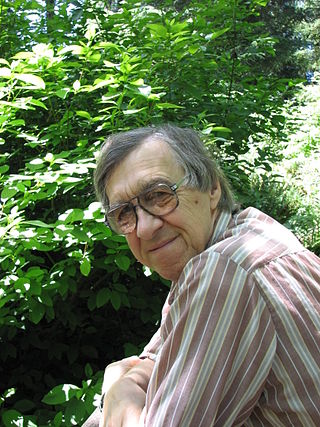
Charles T. Tart is an American psychologist and parapsychologist known for his psychological work on the nature of consciousness, as one of the founders of the field of transpersonal psychology, and for his research in parapsychology.

Cosmic Trigger I: The Final Secret of The Illuminati is the first book in the Cosmic Trigger series, first published in 1977 and the first of a three-volume autobiographical and philosophical work by Robert Anton Wilson. It has a foreword by Timothy Leary, which he wrote in the summer of 1977.
In philosophy, psychology, sociology, and anthropology, intersubjectivity is the relation or intersection between people's cognitive perspectives.
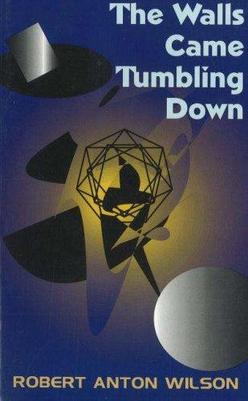
The Walls Came Tumbling Down is a film script written by author Robert Anton Wilson, first published in book form in 1997.

Lifeworld may be conceived as a universe of what is self-evident or given, a world that subjects may experience together. The concept was popularized by Edmund Husserl, who emphasized its role as the ground of all knowledge in lived experience. It has its origin in biology and cultural Protestantism.
Ernest Ropiequet "Jack" Hilgard was an American psychologist and professor at Stanford University. He became famous in the 1950s for his research on hypnosis, especially with regard to pain control. Along with André Muller Weitzenhoffer, Hilgard developed the Stanford Hypnotic Susceptibility Scales. A Review of General Psychology survey, published in 2002, ranked Hilgard as the 29th most cited psychologist of the 20th century.
Enactivism is a position in cognitive science that argues that cognition arises through a dynamic interaction between an acting organism and its environment. It claims that the environment of an organism is brought about, or enacted, by the active exercise of that organism's sensorimotor processes. "The key point, then, is that the species brings forth and specifies its own domain of problems ...this domain does not exist "out there" in an environment that acts as a landing pad for organisms that somehow drop or parachute into the world. Instead, living beings and their environments stand in relation to each other through mutual specification or codetermination" (p. 198). "Organisms do not passively receive information from their environments, which they then translate into internal representations. Natural cognitive systems...participate in the generation of meaning ...engaging in transformational and not merely informational interactions: they enact a world." These authors suggest that the increasing emphasis upon enactive terminology presages a new era in thinking about cognitive science. How the actions involved in enactivism relate to age-old questions about free will remains a topic of active debate.

Donald David Hoffman is an American cognitive psychologist and popular science author. He is a professor in the Department of Cognitive Sciences at the University of California, Irvine, with joint appointments in the Department of Philosophy, the Department of Logic and Philosophy of Science, and the School of Computer Science.
Philosophy of psychedelics is the philosophical investigation of the psychedelic experience. While psychedelic, entheogenic or hallucinogenic substances have been used by many traditional cultures throughout history mostly for religious purposes, recorded philosophical speculation and analysis of these substances, their phenomenological effects and the relevance of these altered states of consciousness to philosophical questions is a relatively late phenomenon in the history of philosophy. Traditional cultures who use psychedelic substances such as the Amazonian and Indigenous Mexican peoples hold that ingesting medicinal plants such as Ayahuasca and Peyote allows one to commune with the beings of the spirit world.
References
- ↑ Neuropolitique, New Falcon Publications, 2006, p. 93
- ↑ Wilson, Robert. "Real Reality". YouTube . Archived from the original on 2021-12-21. Retrieved 23 July 2011.
- ↑ Wilson, Robert Anton (2003). "Maybe Logic: The Lives And Ideas Of Robert Anton Wilson -- Illustrated Interview". American Buddha. Retrieved 23 July 2011.
- ↑ Robert Anton Wilson, Prometheus Rising. New Falcon Publications, 1983, 262pp. ISBN 1-56184-056-4
- ↑ Sam Keen, Castaneda interview, Psychology Today, Dec. 1972
- ↑ Roger A. Salerno, Beyond the enlightenment: lives and thoughts of social theorists. Greenwood Publishing Group, 2004, p.179.
- ↑ Talcott Parsons, The Social System. New York: The Free Press, 1951
- ↑ Matthew Alper, The "God" Part of the Brain: A Scientific Interpretation of Human Spirituality and God. Sourcebooks, Inc., 2008, p.50f.
"The human mind, Kant contended, must be born, not as a clean slate, but with built-in 'modes of perception' that work to organize the multitude of information our sense organs are constantly imparting to us. Without such built-in processing mechanisms, we would experience reality as an unintelligible jumble of sense experiences." - ↑ Seed, How do brains filter data?
- 1 2 New Scientist: 'Party chat' brain filter discovered
- ↑ BBC, Brain 'irrelevance filter' found, 10 Dec 2007. Retrieved 10-11-09.
- ↑ Example, autism. Autistics are unable "to understand the social communication of neurotypicals", and "Three- to five-year-old autistic children are less likely to exhibit social understanding, approach others spontaneously, imitate and respond to emotions...."
- ↑ Bryn Mawr: Serendip, Through Different Eyes: How People with Autism Experience the World
- ↑ See Synesthesia, Apophenia
- ↑ Thom Hartmann, How We Experience The World Differently
- ↑ See Representational systems (NLP), Linguistic relativity
- ↑ See Constructivism (learning theory)
- ↑ See Solipsism
- ↑ Enhanced Visual Motion Perception in Major Depressive Disorder, The Journal of Neuroscience, July 15, 2009, 29(28):9072-9077; doi : 10.1523/JNEUROSCI.1003-09.2009
- ↑ See Qualia
- ↑ Cherry, E. C. (1953) Some experiments on the recognition of speech, with one and with two ears. Journal of Acoustical Society of America 25(5), 975-979.
- ↑ Charles Tart, Waking Up: Overcoming the Obstacles to Human Potential. iUniverse, Inc., 2001, 344pp. ISBN 0-595-19664-0
- ↑ Review by Howard Rheingold
- ↑ J. Jeffrey Means, Mary Ann Nelson, Trauma & evil: healing the wounded soul. Fortress Press, 2000, p.30-32. ISBN 0-8006-3270-2.
"Awakening from the consensus trances in which we are stuck as a result of living in a violent society is rare." - ↑ Karen Eriksen, Garrett McAuliffe, Teaching counselors and therapists: constructivist and developmental course design. Greenwood Publishing Group, 2001. pp. 366. ISBN 0-89789-795-1
- ↑ R. Elliott Ingersoll and Cecile Brennan, in Eriksen, McAuliffe 2001, p.336.